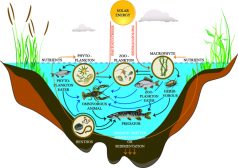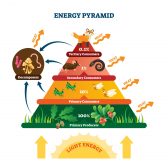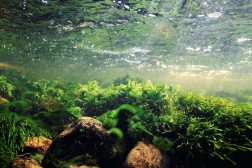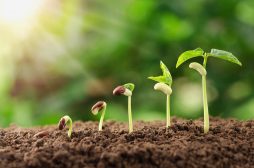‘Primary producers (also called simply as producers) are the autotrophs capable of producing organic compounds from light energy or chemical energy (e.g. inorganic sources) through photosynthesis or by chemosynthesis, respectively. Primary producers are capable of manufacturing their own food. Photosynthetic organisms such as plants and algae can capture photons from light energy and use inorganic salts, water, and carbon dioxide to produce organic compounds such as glucose. Chemoautotrophs are prokaryotes that use inorganic compounds to produce carbohydrates. Some of them can use hydrogen sulfide, ferrous iron, ammonium, or sulfur to produce organic compounds from carbon dioxide. Examples of chemoautotrophs are methanogens, halophiles, nitrifiers, sulfur oxidizers, and thermoacidophiles. In an ecological pyramid, the primary producers occupy the first trophic level. They serve as food for consumers or for higher trophic levels in the ecological pyramid. Since they are at the base of the pyramid all life on earth relies on them either directly or indirectly.
See also
References
- Michigan Technological University – Michigan Environmental Education Curriculum. (2019). How Do Primary Producers Make Their Own Food? Retrieved from Mtu.edu website: http://techalive.mtu.edu/meec/module10/Howarenutrientscycledinaschoolyardecology.htm
© Biology Online. Content provided and moderated by Biology Online Editors






